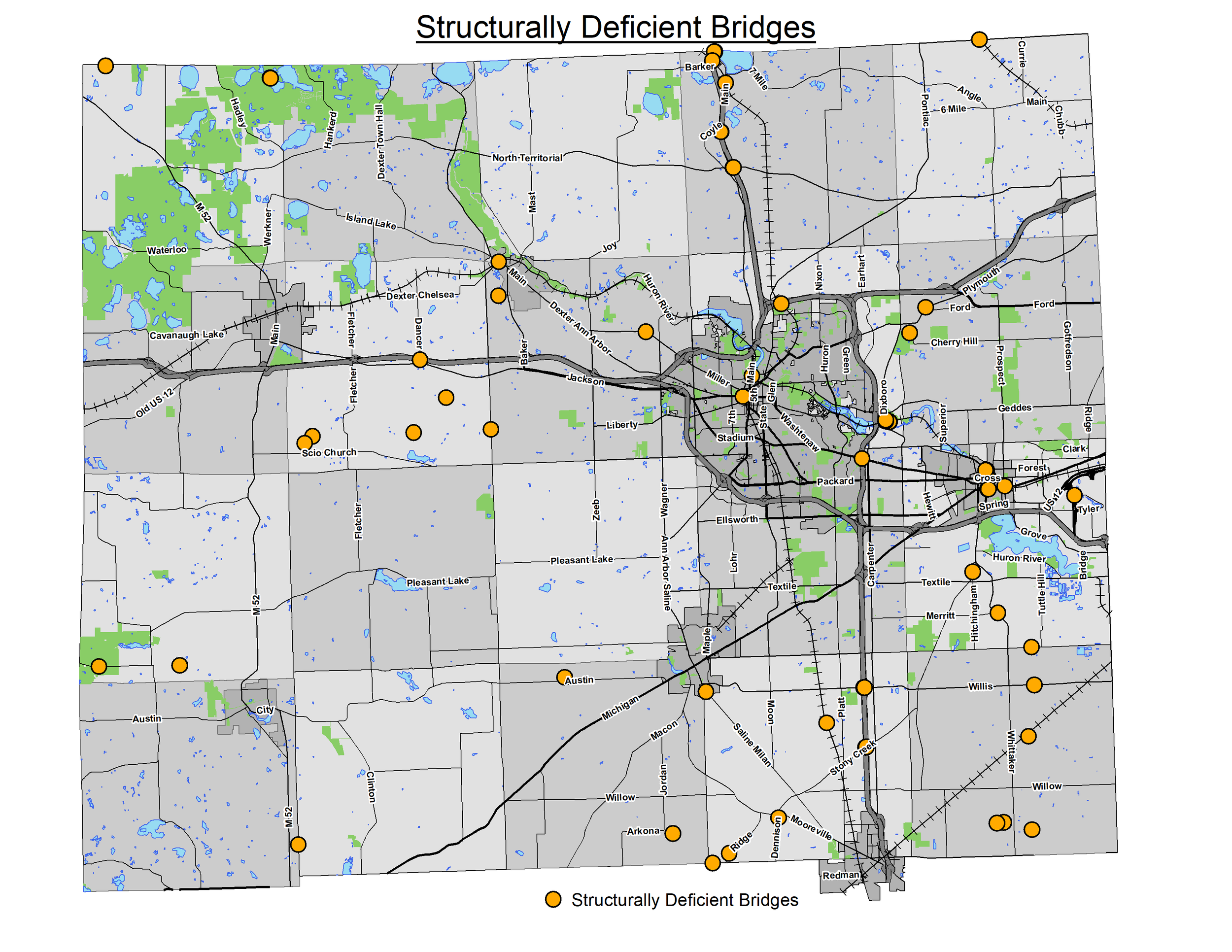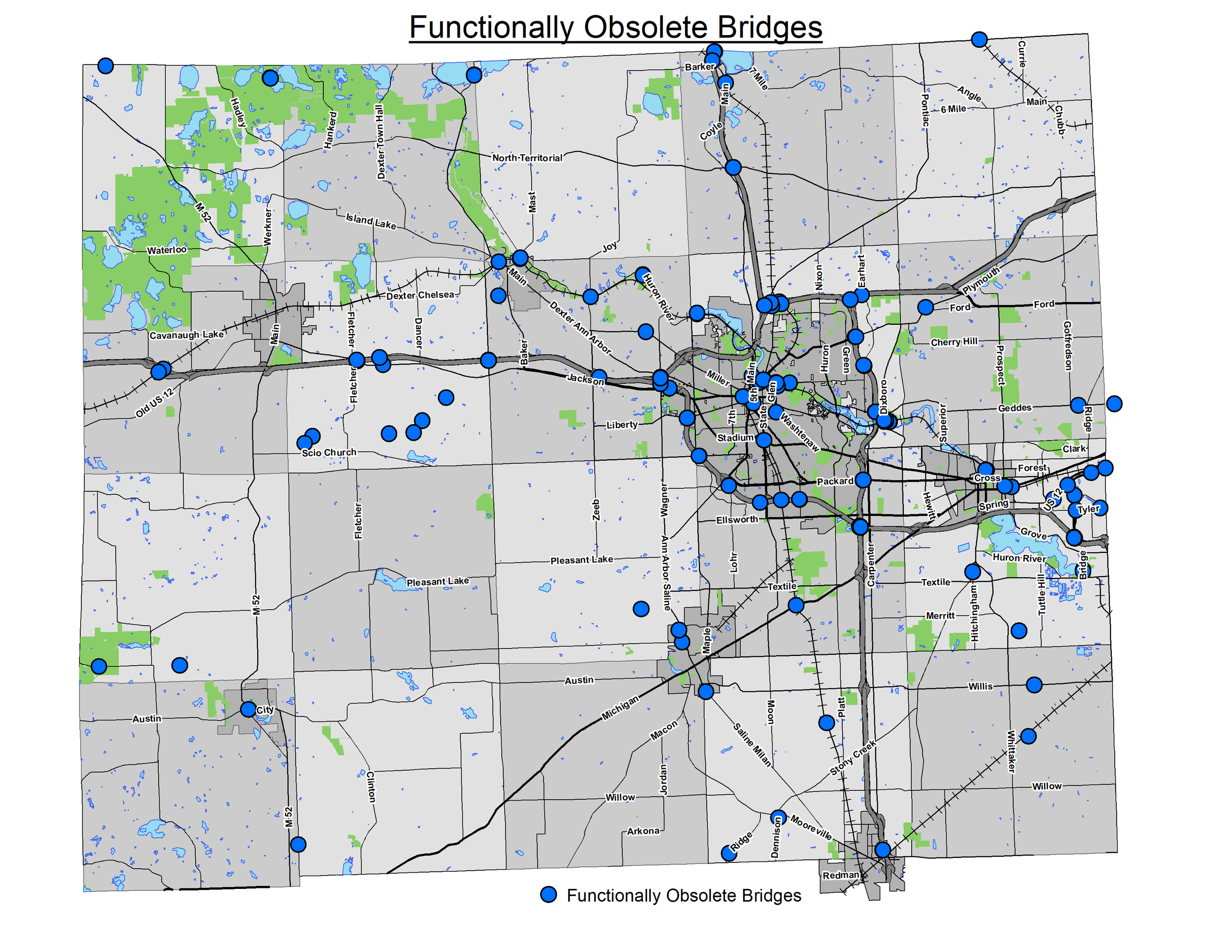Bridge Deficiencies
Background
Bridges are important investments in an efficient transportation system, increasing access while decreasing travel time. However, bridge funding has not increased despite the needs of aging structures. As a result, six bridges in Washtenaw County are closed, and more than 50 other bridges are weight restricted. Closed and weight restricted bridges are more than an inconvenience, they cause longer travel times, which results in wasted time, natural resources and money. Additionally, closed and weight restricted bridges can reduce the timeliness of law enforcement and emergency services. Establishing sustainable transportation funding is necessary to ensure the structural integrity of bridges across the region.
Bridge Deficiency Criteria
MDOT and local agencies collect and regularly update data on bridge structure condition. The data is up to date as of 2016, but do not include any projects completed in 2017.
Structurally Deficient (SD) Status - A bridge is classified as structurally deficient if the deck, superstructure, substructure, or culvert is rated in "poor" condition (0 to 4 on the National Bridge Inventory (NBI) rating scale). Also, a bridge can be classified as structurally deficient if its load carrying capacity is significantly below current design standards or if a waterway below frequently overtops the bridge during floods.
Functionally Obsolete (FO) Status - Bridges classified as functionally obsolete are necessarily not structurally deficient, but their design is outdated. They may have lower load carrying capacity, narrower shoulders or less clearance underneath than bridges built to the current standard.


